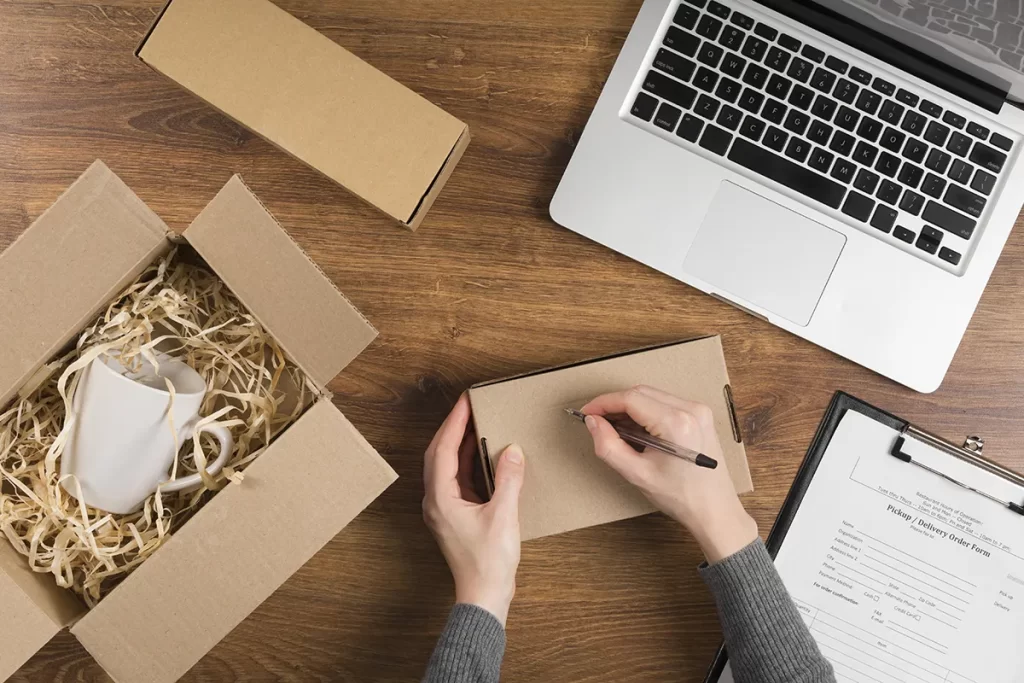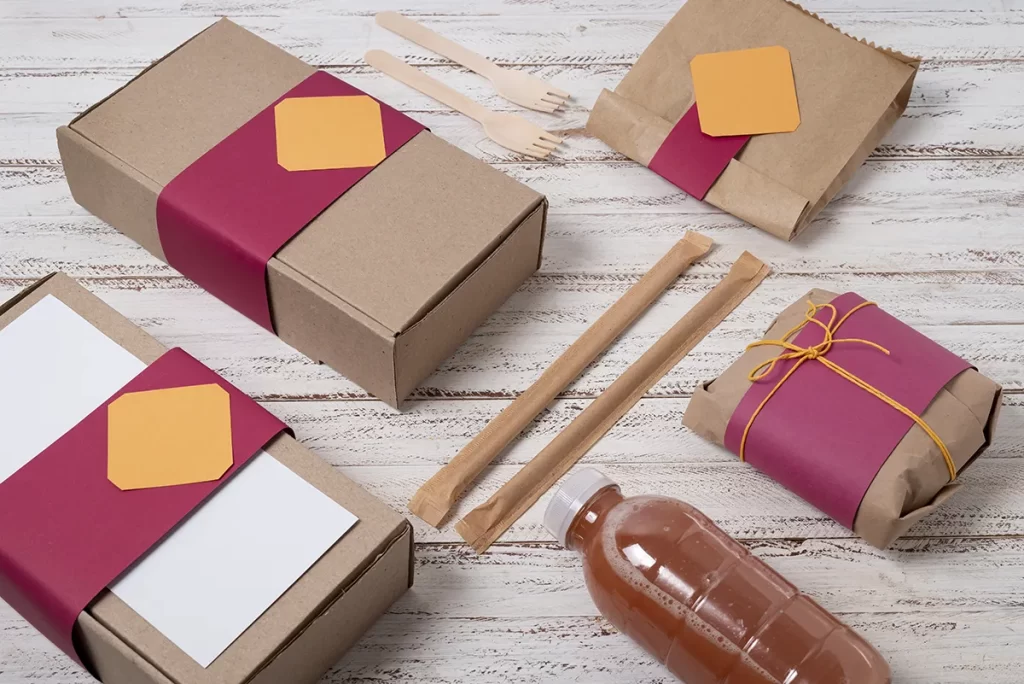Have you ever wanted to go to McDonald’s just to get a Happy Meal? It gives you a sense of joy and you anticipate the little red box with the yellow handles, right? In a way, this makes you feel a connection with the brand and recall its colors and communication as you can vividly see the packaging in your mind’s eye.
This shows us that packaging plays a very important role for your brand. But what if you have ordered your Happy Meal online and received the box at home? Do you think the packaging would still be good? Or do you think you would even receive the meal in the same package in the first place?
There are high chances that your meal will arrive in a brown bag with the rest of your food, potentially depriving you of the momentary joy you expected. Let’s face it – we live in a world where people prefer to buy online than in person. And crafting packaging design for e-commerce sales comes with unique challenges and considerations. Be it
- Ensuring product safety during shipping
- Optimizing the packaging size for cost-effectiveness
- Incorporating branding elements for a cohesive customer experience
Every aspect requires careful planning and execution. If you are facing these problems or want a solution to prevent this, then keep reading to delve into the challenges of packaging products for e-commerce.
Don’t worry – we won’t leave you hanging! We will also explore potential strategies to address them effectively and ensure your branding remains strong through your packaging.
In this article, you will read about
Ensuring product safety during shipping
One of the primary concerns when packaging products for e-commerce is ensuring they arrive at their destination intact and undamaged. Unlike traditional retail environments where products are handled with care, shipments in the e-commerce realm are subjected to various handling processes and environmental conditions.
To mitigate the risk of damage during transit, consider the following strategies:
1. Protective packaging materials
Use durable and shock-absorbent packaging materials such as bubble wrap, air pillows, or foam inserts to cushion the product and prevent it from shifting or getting damaged during shipping. Choose materials that provide adequate protection while also being lightweight to minimize shipping costs.
2. Secure enclosures
Ensure that the product is securely enclosed within its packaging to prevent it from moving around or becoming exposed during transit. Use sturdy boxes or mailers that can withstand the rigors of shipping and provide a barrier against external elements such as moisture or impact.
3. Fragile labels and handling instructions
Clearly label packages containing fragile or delicate items with “Handle with Care” or “Fragile” stickers to alert carriers and handlers to exercise caution. Include clear instructions on how to handle and unpack the product to minimize the risk of mishandling or damage.

Optimizing packaging size for cost-effectiveness
In addition to protecting the product, optimizing packaging size is essential for minimizing shipping costs and reducing environmental impact. Oversized or excessive packaging not only increases shipping expenses but also contributes to waste generation once your products are unboxed.
When you want to sell to modern customers, this poses a challenge as most customers are becoming very eco-friendly and conscious. To optimize packaging size while maintaining product integrity, consider the following approaches:
1. Right-sized packaging
Choose packaging that closely matches the dimensions of the product to minimize empty space and reduce dimensional weight charges. Custom-designed boxes or mailers tailored to the specific dimensions of the product can help optimize packaging size and reduce material waste.
2. Lightweight materials
Select lightweight packaging materials such as corrugated cardboard or recyclable plastics that offer adequate protection without adding unnecessary bulk. Lightweight materials not only reduce shipping costs but also minimize the carbon footprint associated with transportation.
3. Flexible packaging solutions
Explore innovative packaging solutions such as flexible pouches or envelopes that can conform to the shape of the product and eliminate excess material. Flexible packaging not only saves space but also offers versatility and convenience for both shipping and storage.
Also read: Innovative trends in packaging design: Materials and sustainability
Incorporating branding elements for a cohesive customer experience
Packaging is a powerful branding tool that allows e-commerce businesses to make a lasting impression on customers and reinforce brand identity. Beyond protection and efficiency, packaging serves as a tangible representation of the brand and can enhance the overall customer experience.
To leverage packaging as a branding opportunity, consider the following strategies:
1. Brand-consistent design
Incorporate brand colors, logos, and visual elements into the packaging design to create a cohesive brand experience across all touchpoints. Consistent branding reinforces brand recognition and instills trust and loyalty among customers.
2. Personalized touches
Add personalized touches such as thank-you note, branded stickers, or inserts to create a memorable unboxing experience for customers. Personalization fosters a sense of connection and appreciation, enhancing the perceived value of the product and fostering positive brand associations.

3. Sustainable packaging practices
Align packaging design with eco-friendly values by using recyclable or biodegradable materials and minimizing excess packaging. You could even go the extra mile and ask your customers to recycle the boxes after opening them for a reward. Sustainable packaging not only appeals to environmentally conscious consumers but also reflects a commitment to corporate social responsibility.
Also read: The power of packaging design: How it can shape your brand perception
Conclusion
Designing packaging for e-commerce presents a unique set of challenges and opportunities. By following these simple solutions, e-commerce businesses can create packaging solutions that not only protect the product but also delight customers and reinforce brand loyalty. In online retail, packaging serves as a powerful tool for differentiation, customer engagement, and sustainable growth.
By leveraging thoughtful design and innovation, e-commerce brands can elevate the unboxing experience. They can prevent customers from feeling compromised and worried about receiving damaged goods. At the same time, they can ensure better brand recall and leave a lasting impression on customers.




